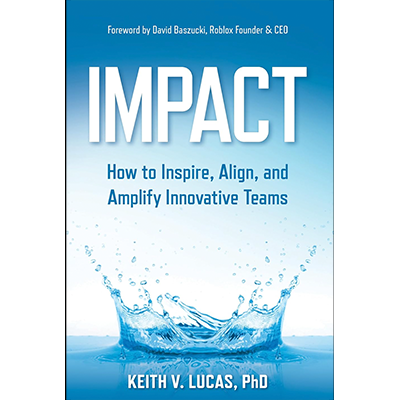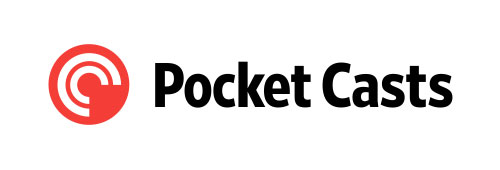In this episode of Inside Personal Growth, host Greg Voisen sits down with Keith V. Lucas — a startup advisor, former Chief Product Officer at Roblox, and author of the groundbreaking book, Impact: How to Inspire, Align, and Amplify Innovative Teams.
With nearly three decades of experience helping entrepreneurial teams turn bold ideas into measurable results, Keith shares powerful insights on leadership, culture, and innovation drawn from his time scaling Roblox from a small team to thousands of employees.
From Engineer to Leader
Keith’s journey reflects a powerful transformation — from a technical expert to a visionary leader. He reveals that leadership is a skill to be developed, not an instinct. The key lies in learning to create systems where people thrive, collaborate, and innovate without losing their autonomy or motivation.
The Concept of “Mission Athletes”
At the heart of Keith’s book is his concept of Mission Athletes — individuals who are:
-
Driven by purpose and ownership
-
Growth-minded and self-motivated
-
Capable of aligning around shared values
He emphasizes that the most effective teams balance autonomy and alignment, empowering members to take initiative while working cohesively toward a common mission.
Leadership Lessons from Roblox
Drawing from his Roblox experience, Keith explains how to build “engines of innovation” — self-reinforcing systems that amplify creativity, trust, and execution. He shares how a vision document can be more powerful than a traditional job description, helping leaders hire people who are genuinely inspired by the mission rather than just filling roles.
He also introduces his Green-Yellow-Orange-Red Coaching Framework, a practical tool for assessing team members’ “probability of success,” guiding leaders on when to coach, when to course-correct, and when to make the difficult decision to let go.
Leading Without Bureaucracy
Keith discusses how leaders can maintain structure and clarity as teams scale — without falling into bureaucracy. His “just-in-time culture” approach helps companies organize around real pain points while continuously refining values, goals, and communication systems to keep innovation alive.
What Listeners Can Learn
-
Leadership as a learned skill
-
Building aligned and autonomous teams
-
Hiring through vision, not job titles
-
Coaching frameworks for team growth
-
Creating culture without bureaucracy
-
Asking the three key leadership questions
Connect with Keith V. Lucas
Impact: How to Inspire, Align, and Amplify Innovative Teams
keithvlucas.com
Instagram
Twitter / X
LinkedIn
You may also refer to the transcripts below for the full transcription (not edited) of the interview.
[00:00.5]
Welcome to Inside Personal Growth podcast Deep Dive with us as we unlock the secrets to personal development, empowering you to thrive. Here. Growth isn't just a goal, it's a journey. Tune in, transform and take your life to the next level by listening to just one of our podcasts.
[00:19.9]
Well, welcome back to another episode of Inside Personal Growth. My name is Greg Voisen and I am here in North San Diego County. And on the other end of the screen, if you're watching on YouTube, but if you're listening on itunes or Spotify, you don't get to see Keith, but it's Keith Lucas.
[00:37.6]
Good morning to you Keith. How you doing? Good morning. I'm doing great. How are you? I'm doing awesome and it's really nice to have you on the show. I'm going to tell the listeners a tad bit about you, but Keith is the author of a brand new book called Impact how to Inspire a Line and Amplify Innovative Teams.
[01:00.6]
And it's Keith Lucas. Lucas. And for all my listeners in the show notes below, you'll be able to click and you'll be able to get to Keith's website which is keithlucas.com so Keith, he is a startup advisor and former tech executive who spent nearly three decades helping entrepreneur terms teams, turn bold ideas into measurable impact.
[01:27.8]
As a former chief product officer at Robolix, the social platform for user created games and virtual experiences, Keith played a pivotal role in scaling the company's infrastructure, product and teams during its explosive growth phase.
[01:47.9]
Keith's expertise spans product development, engineering leadership and organizational culture with a particular passion for what he calls empowering people to get things done together. His approach focuses on building what he terms engines of innovation, self reinforcing systems that amplify creative efforts and align teams around shared visions.
[02:14.6]
He's a Stanford PhD in Aeronautics and Aeronautical engineering and additional training in public policy from UC Berkeley. Keith brings both technical depth and strategic thinking to the challenges of building high performing teams.
[02:31.9]
And we're going to dive right into his book Impact, which is where all this comes from. Keith. And it's Keith V Lucas. I forgot the V when I said it before. Keith Vlucas. Uh.com is where you want to go Keith.
[02:47.8]
Well, you know this is an impactful book and you spent much of your career, a lot of your career, a decade, at Roblox, helping scale it from a small team to thousands of employees.
[03:04.7]
What to you in this experience that you had, of doing that and being this Person, who helped inspire and build teams. What was the most surprising thing you learned about team building during that journey there?
[03:21.3]
Yeah, great question. The most surprising thing to me personally probably reflects a journey that I have that's fairly common. Going from a subject matter expert, say like engineering and having to lead teams.
[03:37.8]
And that surprising thing is that leadership is a skill to be developed. It was surprising to me. I had thought that, it was more intuition and raw talent.
[03:53.1]
And those things can certainly help, and I do think they help a lot. But eventually even the most intuitive and talented leaders hit a wall if they don't develop the skills along with it. And that's probably obvious to many of your listeners, but it wasn't obvious to me.
[04:13.1]
And I think something a lot of people learn along the way. What walls did you actually hit, Keith? That, you know, I mean, look, there's. I kind of look at it as, the human soul has both this very intellectual side, it has this spiritual side, it has this side that needs to communicate and get people aligned.
[04:35.9]
And in getting aligned it has to hold a vision. And in creating a vision, it has to be very compelling vision. What was your stumbling block, versus going from this very detailed, intricate plan to this bigger vision that this is what we're going to create.
[04:54.6]
What did you run into? Well, you're exactly right. On the other side of where I ended up is you do lead by vision and values and a number of other elements. But where I started and the wall that I hit, and I actually am asked about NICs very regularly right now, as people reach out to me about the book leaders hitting the wall, where they are both holding on to being an individual contributor in an area that they've developed a lot of expertise and also trying to hold on to being a leader of people.
[05:37.6]
And this works for a little while, but eventually you can't do both well at the same time. And so what happens is you really hit a wall of stress and you hit a wall of lower performance where in my case you start demotivating the team.
[05:55.7]
And the example or analogy I use about me is, I approached vinais, my leadership style was just trying to get everyone on a bus and hitting the gas pedal as far down as I could, but the bus wouldn't go anywhere and people wanted to get off.
[06:14.0]
And unless you're having people hold the wheel with you and you have a vision, but you're developing a lot of the execution together, you're leaning through inspiration, all of those other Things about leadership, unless you get to the other side, you just have a lot of stress.
[06:36.9]
And that's where I got to. That was the wall that I hit. So I know it's difficult when you're coming from an engineering standpoint. I think I expressed to you my son is a lead at Adobe and he's had the same problem. When do you really realize that letting go of what you think you know so much about and diving into what you really need to learn more of, which is leadership.
[07:07.2]
Right. In this case, how to be a good leader. How did you, I wouldn't say let go of that. Yes, you need the knowledge, you need the expertise. Yes. But the reality is the people are looking at you to guide and direct them, not tell them what to do.
[07:23.9]
Yeah, the way that I even think about it, and the great thing about all forms of learning is that you can keep going. And so the way I think about it even now is you create a context where people can operate and operate driven by their own motivation.
[07:46.7]
So one of the indicators, as I mentioned, it, is stressful. If you're getting stressed, literally, about how do I do what I need to do and how do I have the team do what it needs to do?
[08:03.7]
That is one of the signs. I, would also look at the stress around you and the morale of the people around you. If the morale is not that high, if there is confusion, if there is, one of the other signs, if everyone is coming at you all the time for everything, that's a sign you haven't created the right context and you need to invest more in the team and less in your own work.
[08:33.9]
I would say one other one is you can also map it to the size of the team. Obviously, if you're responsible for the work of three people, including yourself, you can be a player, coach, you can have your part of the mission.
[08:51.3]
But as you're going to five and ten and twenty and hundreds or more, you have to build the system that allows people to operate. And so that shift is organic as the team grows. And you've done a really good job of it.
[09:08.5]
And I think, you know, in the, amygdala of our brain, where they talk about the executive capacity, to reach that kind of executive capacity, and we know the neural pathways, frequently under stress, go to fight, flight or freeze.
[09:25.8]
And I think once you start seeing this in yourself, you really realize that you've gotta move beyond that. Right. And you. The central thesis of the book is the Alignment autonomy of mission athletes. Right?
[09:41.0]
Yes. And that's pretty specific phrase. So I think it'd be good for you to break this down and why is each word so important? Right. No, happy to. So the foundation of an entrepreneurial team and for context.
[10:00.2]
These are teams that have to disrupt the status quo. And when you disrupt the status quo it's uncertain and you need creativity. So that's the context for the entire book. When you have this kind of context.
[10:16.1]
I've developed the term mission athletes to describe the people most suited for this kind of work. These are people dedicated and inspired by mission. They are growth minded, meaning they are continuously improving. They are ownership oriented and ownership seeking.
[10:32.8]
They want to have impact and connect impact to their actions. And they're capable of living by a shared set of values. These are the people that are most effective. And the more people like this that you have, the more the team can operate on its own.
[10:52.8]
The fewer of these types of people you have, the more you're a manager. Not even a leader, you're a manager. Now layer on top autonomy. Autonomy is distributed ownership. It is the delegation of certain responsibilities.
[11:11.6]
Mission athletes need autonomy because of that sensor, that sense of ownership. But teams need autonomy because it unlocks scale, it unlocks brain power and effort across the team. But teams need aligned autonomy.
[11:29.9]
That means everyone is working generally in the same direction. Otherwise you can't focus enough to have impact that you need. Even if everyone is well meaning and capable, if you don't have any alignment then everyone's punching in all directions.
[11:50.8]
So individuals love autonomy but teams need aligned autonomy in order to have focus. But I think I remember Margaret Wheatley talking about this so much and Peter Sengay.
[12:06.0]
So when you look at organizational development and you look at naturally organizing systems almost like in biology, right? You've got this kind of culture, you've got these people.
[12:22.1]
And I think, and I would like you to answer, this is like did you find as a leader that these self organizing systems can happen and if they did happen it weeds out the C and B players and the A players rise to the top of the cream or did you actually have to go in there with a hatchet and start clearing out?
[12:50.9]
I would say in life that life is the coming together of theory and practice. Or real and ideal.
[13:05.6]
I wouldn't say hatchet but let me start with the ideal. And it is actually realized in my experience. Yes, absolutely. If you create the proper context and part of this can Be top down like vision and mission and values are often the founder.
[13:26.4]
Really developing those with a small group but then you can co develop strategy and goals and metrics. If you have the right context, the right values, if those values and this is a must impact hiring, retaining, promoting and exiting.
[13:46.7]
If they do all that you can have teams that I would say don't require zero, effort but they're much more collaborative effort with a feeling of touch points. And you're correct, people will self select off that or the people who are performing well will organically reject the people who don't align with the system.
[14:15.8]
At the same time I do think that the culture you put into place is part performance system but also part economic system meaning there's this shared resource. And that performance issues are often like market failures where someone has to come in and correct them at some point.
[14:41.2]
And that's where people come in. And I've had to do that many a time. I'm sure in your capacity you did. Now you just talked about culture and the book emphasizes that culture is what you do, not what you say.
[14:56.8]
Yes, and I agree because it's all in the seeing of something that really gets me excited. That not lip syncing or whatever, you know, like hey give it lip service. Can you give us a concrete example of how a team's stated values completely contradicted their actual behavior?
[15:21.1]
Because you know it's like hey here's my stated values. But this, I'm not living my values, I'm contradicting them. Right. So I've been on teams that were high performing and low performing and both had moments where the stated and the realized values were different.
[15:40.1]
A clear example is if you have values which a lot of teams like that are something like take initiative, act with urgency. So a lot of teams will have something like that in an entrepreneurial environment.
[15:56.2]
But then there over time as your team grows, there's a lot of bureaucracy that might happen where suddenly there's a lot of approvals and there's a lot of meetings and there's a lot of other things. Well then the day to day culture, the culture people experience is bureaucratic.
[16:14.8]
It's approval seeking, it is the opposite of those things. And that happens in a high performing team, that it's high performing because it realizes it and course corrects and it happens on low performing teams that don't realize it.
[16:35.1]
The other thing though to point out is that the opposite is only you know isn't even necessary that it's opposite. The harm can come in, in that they're just different.
[16:51.4]
And the example I give of this is that I worked for. I left a company one time because I quickly realized that it was operating with low transparency and low integrity. And so I left. And what I tell people about these things, I don't know if they had other values.
[17:12.7]
I don't remember them. I don't know if I knew him at the time. It didn't matter. It's the realized values that are the only thing that matters. It's so well said, Keith. It really is. And I think that there's, you know, when you get into thousands of employees versus hundreds of employees versus the teens of employees, there and you saw a company do that and you rode the wave all the way through and it gives you a different perspective.
[17:45.9]
Because the numbers of people that you're dealing with and the quantity that you're dealing with to try and reach your objective, whether it's building software or it's building a car, doesn't matter what it is. So you advocate for starting.
[18:03.5]
And I go back to this question with a vision document rather than a job description when hiring. And I think when you start hiring, whether it's through whatever platforms you're getting people, you have to find a way to like filter.
[18:18.7]
Right? Yes. What's the difference and why does it matter for attracting mission athletes to really, okay, say hey, well I have a good candidate. But here's our vision document. You need to understand it, during the hiring process, I don't know if you were one of the people that was involved in the hiring process.
[18:39.2]
I was and I used it and whenever I came at it, just at one point, when I was hiring executives and I realized afterwards, oh, I should have been doing this with everyone.
[18:55.5]
But with executives, it really is where I got my inspiration for doing it. So I like to think of it now that you recruit tactically, but you have to hire strategically. And the hiring strategically means you're looking for mission athletes.
[19:15.2]
And the vision document is about getting on that strategic plane. What is the vision for the role and for the team that this person is leading? If they're a formal leader, what is the mission for the role?
[19:31.7]
Why do these matters to the rest of the team? What do they matter to the business? Where will this role be in three years if they do a great job? What are the near and long term goals? So when you start there, you can Then write a job description.
[19:50.1]
In fact, someone else can write it for you. But if you start there, you're now thinking, very comprehensively at a strategic level, looking for someone who not only is able to do those things, but is inspired to do those things.
[20:11.1]
And so I was. This was really effective. I gave this to a couple of vice presidents that I had hired. I got really good feedback. And part of the whole vision document approach is that I gave it to them late in the interview process after we have gone through a lot of the technical things.
[20:32.5]
And it helped me understand who that vision, who really resonated with that, who liked to be inspired that way. And part of the idea was that they would come back in three months with their own version of the document for themselves.
[20:51.7]
They would own it. And so mine was just sort of like, a kickoff point. And so I got really good feedback on it. And I think we had some really good onboarding, some executive as a result of it. Well, I think somebody can hold a vision and has the, There used to be a saying, and I'm not certain it goes for, software engineers, but many businesses, it was higher for attitude, train for aptitude.
[21:21.6]
Yeah. And I still think that holds somewhat true in the sense that if you can keep someone inspired and they're inspiring. Right. A lot of the other things will take care of themselves, because that's a whole energy that they bring.
[21:39.1]
So I want to talk about this green, yellow, orange, red coaching framework. Because once someone's hired and you find out they need coaching, this is an opportunity for someone like yourself, who probably was coaching these people, to put them in one of your frameworks.
[21:59.1]
So how do you know when someone is moved from needing development to needing to exit the team? Yeah, because you can spend a lot of time and money coaching people and they never make it there. And then you have to let them go.
[22:16.3]
How do you know which ones to coach and which ones not to coach? Yeah, no, it's a great question. And, you know, it's partly why this is the title of the chapter that this is in, and the whole idea is this idea of coaching out. And here are the two relevant things or ideas related to answering your question.
[22:39.9]
The first is that it is actually a continuum that you are going from athletic coaching, where you're encouraging and helping in any way you can, like a sports coach, help someone improve their performance, all the way to exiting.
[23:00.4]
And it's a continuum along the way. And what defines that continuum is this Idea of probability of success. And so I, use this term probability of success. It is an assessment based on criteria related to the role and the way the team operates of how, what is the likelihood that this person will be successful on this team from this mission in the near future and when that's high.
[23:32.4]
And in these, it should be the gaining factor of recruiting. If you hire people with a very high probability of success, so the default expectation is everyone is high, a high probability of success. And then you coach athletically.
[23:49.2]
Some people may get maybe, like if you use a sports analogy, they get into a slump of some kind. Maybe they have one problem that they can't get out of, or maybe they have a number of growing problems. They still have a high probability of success.
[24:06.3]
But now there's a little concern here is where you would be coaching, maybe more micro turnarounds. It would be more like, hey, you're having this slump. One of you tried, and try to help them forensically figure out how to turn things around.
[24:24.4]
It's still athletic in nature. There's just an element of concern to it. And as I talk about in the book, it's something you convey. Some of these people go further when they go below a critical point where now the probability of success becomes unlikely.
[24:43.6]
Now when it's unlikely, you are now managing a turnaround or exit. Some people do turn it around. It's just not a lot, but there's still a possibility of it. And so here your people who are on the other side are hearing that concretely, what are the issues?
[25:05.9]
They're hearing that their job is on the line or just so it's absolutely clear and they have to take ownership in the turnaround. And then there's always these don't go on forever. And we can talk about that separately.
[25:21.5]
There is a, you can think about time, but eventually some people dip further into. Okay, they're not turning around and must be exited. So it is a continuum, you know, because you're following the continuum and you're using this idea of probability of success as a metric through that continuum.
[25:44.3]
Well, because of the kind of business that you were in. In particular, I think the structure depends on, let's say a VP and he leads a department within that part meant you have, leads that are, managing a.
[26:02.8]
It might be 20 software engineers, 50, 30, whatever. It depends on the structure. Yes, right, right. And so when people see that structure, your book mentions that some of the people that you've exited that went on to Great successes elsewhere.
[26:21.7]
Right. How do you help leaders get comfortable with the idea that someone can be talented? Now you're talking to the people that are working with you directly as your direct report. But still wrong for the specific team.
[26:39.0]
When that leader is like, hey, Keith, you can't let this person go. I gotta keep them on the team because they do this, this, this and this. And you're saying, no, we have to find somebody who fits the team better because they're really sabotaging.
[26:55.8]
How do you convince that leader that they get comfortable with that idea? Cause that's gotta be tough. I think this is a great question. And there's actually, the surface question and there's like sort of an understanding that is one layer deeper.
[27:13.8]
I would say that the way you framed it, how do you convince a leader about this is the right framing? Because it's usually the leaders who are most reluctant to let someone go. The people on the front lines are very well aware of who is disrupting the team and they're usually way ahead of everyone else.
[27:39.6]
So usually the people on the front lines do not need to be convinced that someone needs to be, let go. Sometimes they do. But, they just need to know that it's been done fairly.
[27:56.0]
The leaders, the way of doing that is it is about the values you put in place. It is about the other elements of your operating system, your other success criteria which can either be performance based.
[28:14.2]
When you're talking about a culture and a team's operating system, it really is about values which are standards of behavior, and it's about principles which are standards of work. And so the one value that is really important in these conversations is to have a value in one way or the other around mastery or the pursuit of better craft over time.
[28:43.8]
Without a value of mastery, it really is hard to convince anyone to keep someone who's kind of okay. Like to get rid of someone who's kind of okay, but they're not really meaning to the team's needs. But with the value of mastery, you can then talk about standards, you can talk about principles, you can talk about values, and it becomes a lot easier.
[29:08.4]
And in terms of the, other element of people being successful after they leave, I always try to remind people it's an assessment, not an indictment. And in fact it's a really narrow assessment.
[29:25.2]
It is. The person has a low probability of success on this team in this moment for next mission. That's it. That's all you know. And it's the only thing that matters, and we have had people, particularly at Roblox, who went on to start companies, more than one company, go on to other companies, do amazingly well and could not align to how we operated at Roblox.
[29:57.6]
I think when you frame it that way it helps a leader more easily make the decision. I think our emotions get involved many times when somebody's worked on a team for a certain period of time and we're reluctant, although intuitively we know probably the best thing to do would be to let that person exit, respectfully.
[30:21.0]
Right. And it's a fine line. And at what point does a team need to evolve from what you refer to as informal culture to a more systematic approach? And how do you avoid creating the bureaucracy while building this kind of structure?
[30:39.9]
Because this is what I think many software engineers hate the most. Yeah. Which is, which is, I mean look we're talking about software here and I know my son has said this many times. Adobe, does its best to mitigate this but at the same time I think the bureaucracy exists.
[31:03.8]
Yeah. Because there's so many reporting arms, you know, it's, yeah, you're reporting to this person and that person's reporting to that person and you know, it's going upstream and, and I'm not saying that the CEO of this company, Adobe, is not available.
[31:21.0]
He is, he makes himself very available to many of the people. But the reality is sometimes you're not getting to speak to the person who's making decisions. Right. So I would say, I've never worked in a very large company by choice so I have the luxury of just expressing my opinion without having been in those shoes.
[31:47.5]
But I have. Bureaucracy creeps in, even on a team of 10. And so here is to answer the first part of your question about how do you transition? I look at it as the best way is continuous evolution.
[32:07.1]
So I have three people I work with right now helping me with my book launch and everything that I'm doing. They're part time. We now have very clear vision, mission values, strategy and goals.
[32:26.3]
It's because then even with four people I wanted everyone to have the context of how to operate to reduce the number of meetings we needed. And, and I think it's ineffective. And it only took me a, like less than a day of brainstorming with another person and brainstorming on my own to just write these down.
[32:51.9]
It does not take a lot of effort on a small team and you can keep it fairly informal. So you have that and then you organically develop that to match the needs of the team. And so this is where you can think about bureaucracy.
[33:08.0]
And I would say that, three things come to mind. The first is, and I talk about this idea in the book, is the idea of just in time culture. So a lot of software engineers, when we are familiar with just in time, designs, it's just in time culture where you only do what's needed to organize and solve real pain.
[33:36.0]
Not trying to organize too far in advance of where you are, that's one thing. The second one is you relentlessly try to address bureaucracy and friction. I used to regularly go through all the meetings we had and rebuild them from scratch to try to reduce how many there were.
[33:59.3]
And then the third thing I did, and you made me remember this just now, is that I really stayed close to all of the, well, not all, but to the frontline software engineers, particularly around the pain, of how we operated.
[34:18.1]
And really if I saw that pain level high, not just sort of average, just average disgruntledness. Like if it was high, you had your pain meter, Keith. Yeah, so that kind of pain is 10 or software engineers, in my experience, me being one of them is like there's always a little bit of annoyance whenever there's even one meeting.
[34:43.8]
So you have to like have that. You start at a slightly higher level. But yeah, like that was so helpful when people were just annoyed. I used that to realize we were on the wrong track. Well, I think over time and again, this is just my personal statement.
[35:01.4]
I've seen it in software companies to grow. In a software company that is growing and is progressive, you're going to transmute certain aspects of your personality. You came in with one, but you're going to leave with a newfound personality.
[35:24.6]
And much of that is, how personable you can be, not how introverted, probably a little bit more extroverted, but being able to relate that way so that you ask open ended questions, you're able to communicate with people.
[35:42.5]
Sometimes, you know, people would say, well, are all these software engineers, do they all have autism? Or what's, what's up with them? You know, but the reality is, is that sometimes socially they're a little in, they don't have it all together. How's that? But as you grow with a company like you were doing, you see that you become more comfortable with that.
[36:03.8]
You're comfortable in your own skin doing that. So for the founders who are reading this book and thinking, hey, Keith, I don't have time for all this people stuff. Yeah, okay. I need to focus on product market fit.
[36:21.2]
Okay, yeah. What would you say to them? Yeah, sure. And just touching on that last point, I, I really, always loved working with individuals on all the teams.
[36:37.4]
It's the connectiveness you need. And we saw this time and time again at Roblox and I saw it at Instrumental and other places I've worked. The power of the individual, whatever their background, being able to contribute and have insight into what you're doing.
[36:57.6]
And so I've always enjoyed my time working with, everyone, in terms of the product market fit. So the short answer is this. 100% focus on product market fit.
[37:13.7]
I'm not going to tell you not to do that. And in fact I advise companies and yeah, the main part of the advising, but if you're focused on product market fit, and maybe it's just you or you and one or two other people, the idea of focus and the ability to focus really is, and who those people are and how you operate really is guided by even a simple set of vision, mission and values.
[37:50.0]
So like, even on the smallest thing, when everything you want to do is, focus on product market fit, it sure helps if everyone understands that, understands the mission, understands the vision and can operate well together to have focus and to act with urgency.
[38:10.7]
So culture matters there. You can just like I said, a few minutes ago, you can do it very quickly and have something you can iterate on, obviously, like what you did with your own small team. Right. You said you took a day to put this together.
[38:27.1]
Now imagine most companies that are 10 times the size of you never having taken the day to do what you're talking about, right? Never having implemented your green, yellow, orange, red coaching framework, never implementing.
[38:45.2]
What you talked about was this vision document, this vision document and job descriptions. There's so many tangible things from your book called Impact that people can take away. And if they only used M1 or 2, it would be a, fantastic for them and implementing and would change.
[39:04.0]
And that leads us to the question to kind of close up and wrap up our interview. Let's say there's a leader out there right now that's listening to our podcast and they only wanted to implement three things from your book starting tomorrow. Right? I think I just pointed out a few of them.
[39:21.3]
Yeah, you did. Maybe I blew it for you, but. No, no, no, I have others. I have others. What would, have the biggest impact immediately on their team's performance. Keith, based on your perspective of having done this and sorry, I took away some.
[39:42.4]
Three good ones. No, no, no, no. I have another set. So first of all, you didn't point out something that I like to tell people. The book is really wrapping your arms around leadership at the team level and the individual level.
[40:00.9]
I always wanted something that was not just how do you set goals or how do you intrinsically motivate. Those are all really important. I wanted an end to end around the whole thing. And so there's a lot there.
[40:16.6]
The good news is like you say, you really can start anywhere and do something and everything interconnects or itself, builds on each other. So the more you do, the better. To answer your question, the simplest version of and where my book started actually, is I would go around early in my leadership career and I would just ask three questions.
[40:49.0]
What are we doing? Why are we doing it? And how do we know we're making progress? And that captures so much complexity from the book that these are really important questions.
[41:04.2]
What are we doing is about focus, it's about strategy, it's about mission. Why are we doing it is about vision and mission and the why of that and how do we know we're making progress is very often a set.
[41:19.5]
Again coming back to do we know what we're doing and how are we measuring it? So you start there and you are immediately able to triage. Do I need to inspire? Do I need to align? Do I need to amplify or do I need to do a little of all three?
[41:35.6]
So I start with those three questions. Well, the book is fantastic and I want to let you, the listeners right now know Keith v. Lucas L U C A S There is a link below. Also when you go to the website, please take time to look about the book.
[41:58.6]
Keith's advising that he does for startup executives is an advisor and author and that's what he's doing his speaking. So he also is a very impactful speaker. You can hire him to do that at one of your events. And I would certainly say go and sign up as well for his newsletter which is at the bottom of the page there.
[42:21.2]
Just give him your email address and your name and you'll get onto the newsletter list. And if you're looking for somebody to unlock innovation to increase the speed and the scale and grow your product development and your people, look to Keith v.
[42:39.3]
Lucas for that go to keithvlucas.com Keith thank you so much for being on Inside Personal Growth, speaking with all of the people out there that are either leading startups, leading new companies, or leading very large and existing companies but still need assistance.
[42:56.8]
Thanks for your words of wisdom and the impact that you've made on our listening audience. I appreciate you. Yeah, no, thank you, Greg. I really appreciate being here and great questions. I had a great time. Thank you so much. Okay. Namaste to you.
[43:12.4]
Thanks so much. Bye. Thank you for listening to this podcast on Inside Personal Growth. We appreciate your support. And for more information about new podcasts, Please go to InsidePersonalGrowth.com or any of your favorite channels to listen to our podcast.
[43:30.1]
Thanks again and have a wonderful day.
Sign up to receive email updates
Enter your name and email address below and I'll send you periodic updates about the podcast.












Leave a Reply